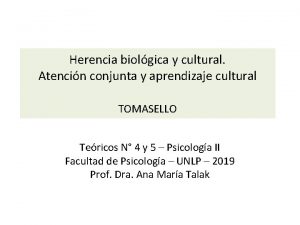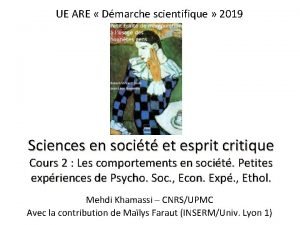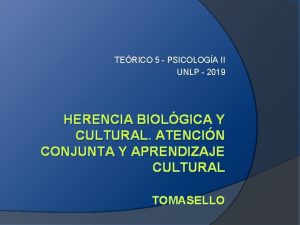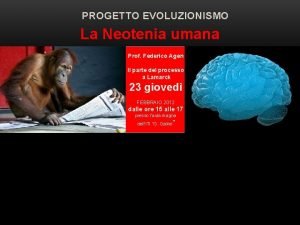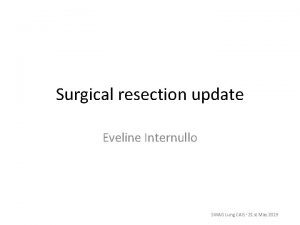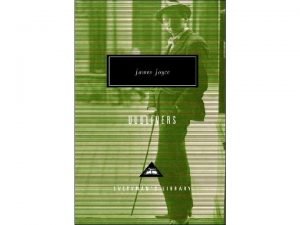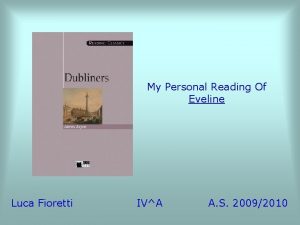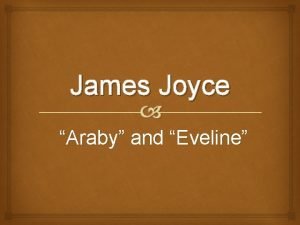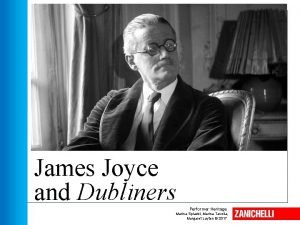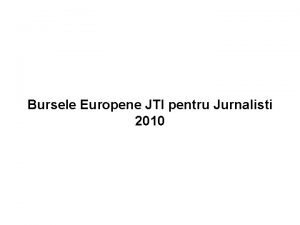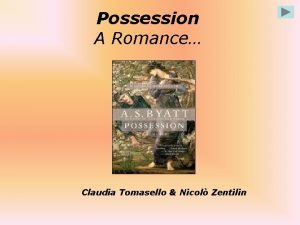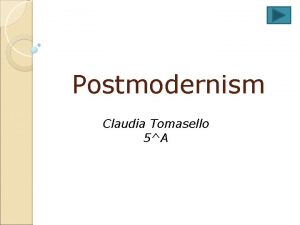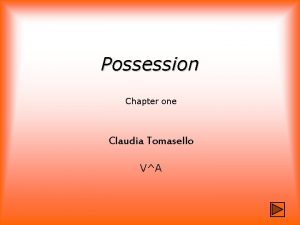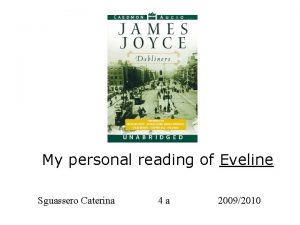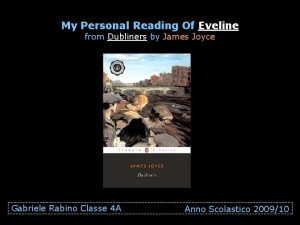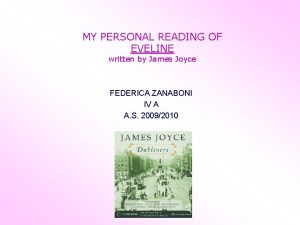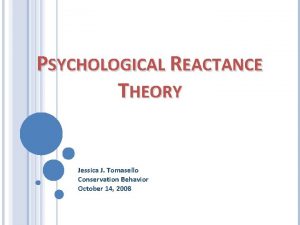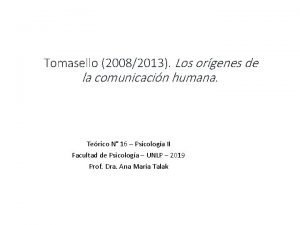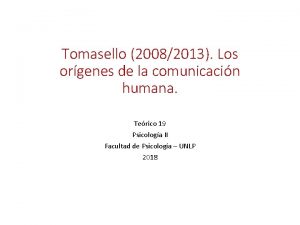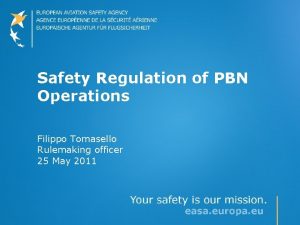My Personal Reading Of EVELINE Claudia Tomasello 4a














- Slides: 14

My Personal Reading Of EVELINE Claudia Tomasello 4^a Anno Scolastico 2009 -2010

Title Meaning…

Denotation…

Structure Analysis The text is organized into three parts: v The function of the first one is to show us Eveline’s thoughts while, one evening she thinks about her past, present and future. v. The function of the second part is to explore Eveline’s life and the events that had scared her. v. In the last one we can understand that Eveline is a woman unable to act, she can’t take a decision for her life.

Narrative Technique v. Kind Of Narrator… v. Styles…

Characterization Main Character: Secondary characters: v. Eveline… v. Eveline’s dad… v. Frank…

Message

Eveline is the title of the short story written by James Joyce. It makes immediately clear that the protagonist is a young girl, so this book can tell about her life: her past, her present or, maybe, her future…

Eveline is a story of adolescence, in particolar, the book tells about a woman who is not able to take a decision. One evening she is sitting by a window and she thinks about her life: she tells about her family and her lover… she is going to leave home, but she is not sure! She would escape her father’s attacks: infact he is a very bad man and he is always drunk. But, she fells connected to her mother’s promise to keep the home together and to look after her dad. In the end she decides to move with her boyfriend… he would save her, but when she is about to get on board she decides not to leave, she is too scared to leave Ireland, she feels “paralysed”.

The narrator is in third person omniscient and adopts Eveline’s point of view to better understand her. The reader can partly identify with Eveline: he understands the problems of the girl due her family situation, but he can only identify with the general psychological situation of her unless he is not leaving the same situation.

Eveline’s characterization is the result of the adoption of both the technique of showing and the one of telling. The narrator adopts the technique of telling when he enters Eveline’s mind and he adopts the technique of showing when he lets the reader listens to the conversation of the girl at the shop, for example. The difference is that the technique of telling allows the reader less freedom because it is filtred by the narrator, on the contrary the technique of showing gives the readers total freedom to draw his or her personal conclusion.

Eveline is the main character of the short story. She is a young girl, who represents a phase in life, the adolescence. But, she is also a symbol: in fact she represents Dubliners, people unable to act. Eveline herself is unable to act, to take a decision, she feels “paralysed”… she hasn’t got a point of view!

Eveline’s dad is “the bad” of the story. He is always drunk and spends a lot of money to drink.

Frank is Eveline’s boyfriend. She thinks about him that he is a very kind, manly and open – heart. He would save her, he would go in Buenos Aires with her and he would begin a new life together.
 Ibbotson und tomasello
Ibbotson und tomasello Filippo tomasello
Filippo tomasello Tomasello
Tomasello Aprendizaje imitativo
Aprendizaje imitativo Tomasello
Tomasello Efecto trinquete tomasello
Efecto trinquete tomasello Tomasello linguaggio
Tomasello linguaggio Pre reading while reading and post reading activities
Pre reading while reading and post reading activities Eveline internullo
Eveline internullo Eveline interior monologue
Eveline interior monologue Eveline narrator
Eveline narrator Symbolism in eveline
Symbolism in eveline Araby and eveline
Araby and eveline Performer heritage 1 solutions
Performer heritage 1 solutions Eveline păuna
Eveline păuna



